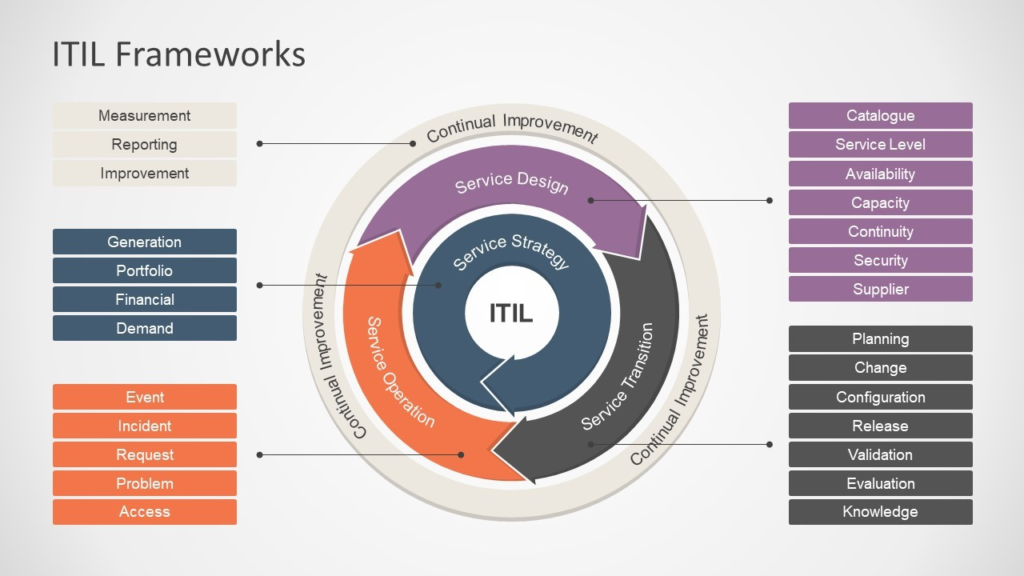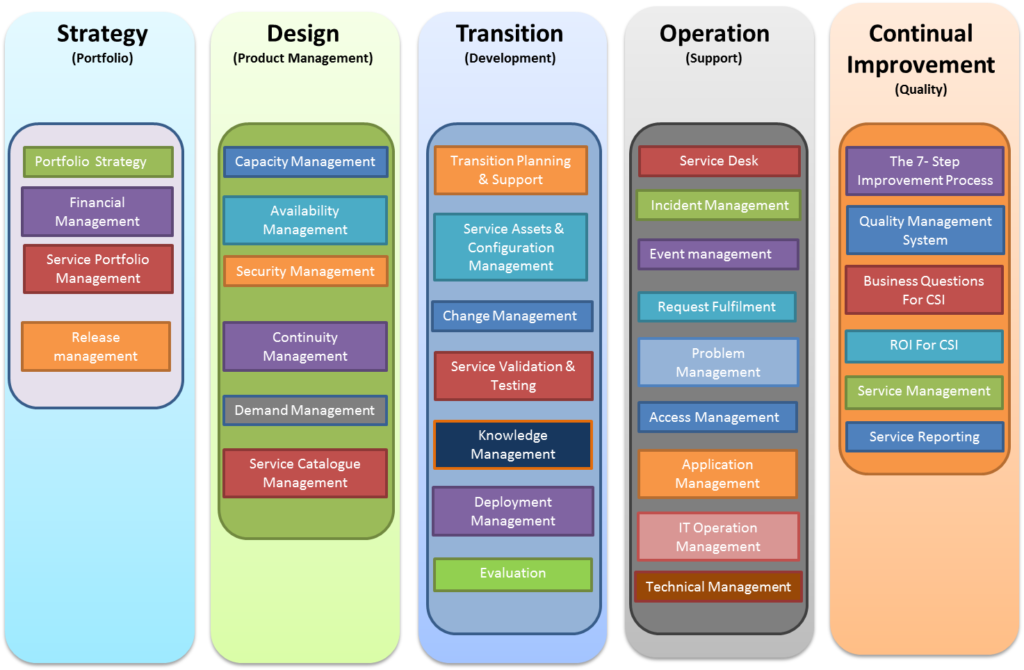What is ITIL ?
ITIL, formerly an acronym for Information Technology Infrastructure Library, is a set of detailed practices for IT service management (ITSM) that focuses on aligning IT services with the needs of business.
ITIL describes processes, procedures, tasks, and checklists which are not organization-specific nor technology-specific, but can be applied by an organization toward strategy, delivering value, and maintaining a minimum level of competency.
It allows the organization to establish a baseline from which it can plan, implement, and measure. It is used to demonstrate compliance and to measure improvement.
Basic Principles
- ITIL is oriented toward customers. He has to always be satisfied.
- Each process is composed of multiple activities which are managed and associated with a goal (monitored through indicators)
- It follows the continual improvment process “plan, do, check, act”. We plan, we realize, we improve, we plan etc.
Finally with ITIL, we take care equally of the “3 P” :
- People
- Products
- Processes
The primary goals of ITIL are :
- to improve the quality of service
- to describe IT management processes
- to improve productivity
- to reduce risks
- to reduce costs
The 5 steps of an IT Service life cycle
Life cycles are defined through successives steps in the life of an IT service, with a configuration element, an incident, a problem, a change etc.

We will in this article describe all 5 steps of ITIL life cycle.
Service Strategy
Service strategy and governance control is focused on IT business :
- Who are our customers ?
- What service do they need ?
- Why should they buy such services ?
The purpose is to be sure that organizations are able to manage costs and risks associated with their services catalogue. They are oriented toward operation effectivness and they provide advices and methods to design and implement services.
Service Design
Service Design allows you to execute the strategy in the form of plans.
- How the service will be provided (architecture, process, capacity, availability, continuity, security, etc) ?
- How services will be controlled ?
The main goal is to design new services with the best cost as fast as possible.
Service Transition
Service transition builds and manages changes in order to minimize risks in a coordinated way.
- How to deliver modified or new services to production ?
- How to check if provided services are adapted to customer wishes ?
- How to manage knowledge in order to maintain services ?
There are several goals with the “Service transition” component :
- determine customer whishes
- reduce the number of know errors and minimize risks
- put in production business projects
- be sure that services are useable by customers and meet expectations
- increase customer satisfaction about releases
- improve services and applications.
Service Operation
Service Operation is here to provide and to maintain services :
- coordinate and run necessary process to provide and maintain services as expected
- maintain daily used technologies to support services
- monitor performance and collect metrics
Continual Process Improvment
Continual Process Improvment is focused on using methods from quality management to learn from past successes and failures.
- Where are we today ?
- Where do we want to go ?
- How can we go there ?
- Have we already been there ?
- How to keep the pace ?
Continual process improvment goals are to :
- continually improves services to reach business goals
- optimize costs
- provide practical advice to evaluate and improve
- continually align IT departments with business needs
- review and analyze the results of service levels obtained
- optimize costs but let the customer satisfied
Summary
In my opinion, ITIL is definitively a great framework you can use to organize an IT company.
Indeed, the customer satisfaction is the main point of the process. From the Strategy and the daily operations, to the continual improvement !

As we have seen in my previous article (here), customer satisfaction is the first Amazon principle and it has to be for all companies !
Customer obsession – Leaders start with the customer and work backwards. They work vigorously to earn and keep customer trust. They obsess over customers.
Sources
- cerfi.ch
- wikipedia.org
- axelos.com
- amazon.com
- simplilearn.com

